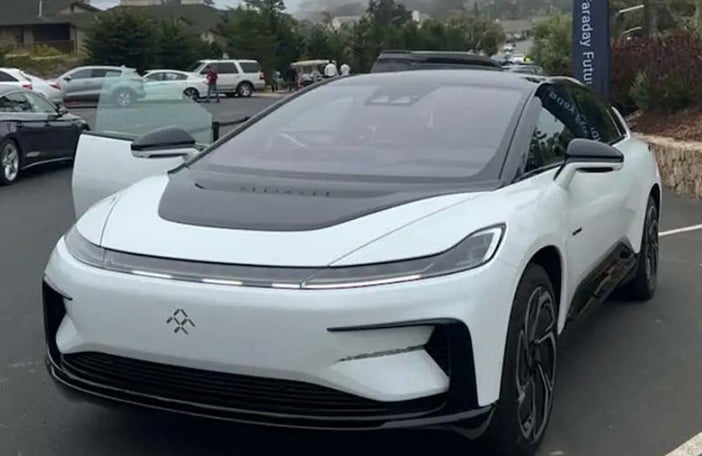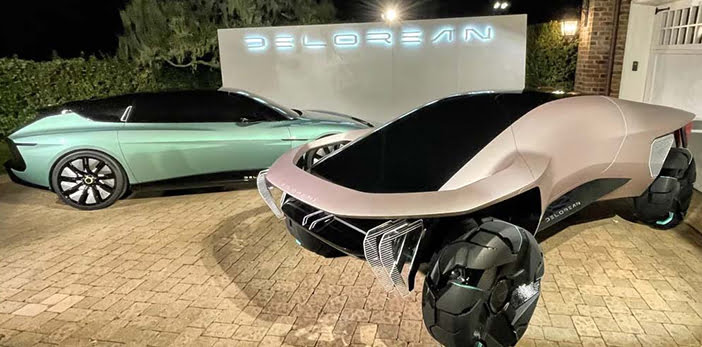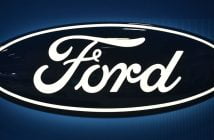+++ BUGATTI ’s next all-new hyper car, set for release in 2027, will use a hybrid powertrain with a petrol engine smaller than the current W16. It will look “different” to current Bugatti cars, but will retain the essence of the brand, with an aerodynamic focus, the French marque’s chief designers have told. It will sit on a new chassis and is expected to be leaner than the recently revealed Mistral roadster, due to the smaller powerplant. “It offers opportunities”, said design director Achim Anscheidt, speaking about the upcoming hybrid powertrain. “There are opportunities to get just a bit more athletic for the shape of Bugatti in the future without losing the general gesture of generosity or sovereignty. It will also have its constraints, because of performance and performance needs. But we know every centimetre of our cars so well by now that we know exactly where change would help us and where it would create a problem”. Bugatti is being very tight-lipped about its next outing, revealing nothing about the design bar the electrified nature of the powertrain. Other hybrid hyper cars using battery-assisted engines range from the Aston Martin Valkyrie, with its 6.5-litre Cosworth V12 engine, to the Mercedes-AMG One, which has a turbocharged 1.6-litre V6 Formula 1 engine. Expect something nearer the Aston end of the scale for the next Bugatti. Bugatti deputy design director Frank Heyl said the new car will “be even more amazing” than the Mistral, asking fans to “trust us”. He added: “It’s going to be amazing, proportionally, technologically, in terms of innovation, in terms of unexpectedness. It’s going to blow people out of the water completely, and it’s a true joy to work on this”. Asked if it could share any design cues with current hybrid hyper cars, such as the One, Anscheidt said: “If it were to be comparable, it would no longer be Bugatti”. Designing the car has also been a challenge, said Heyl, who has been at the marque for 15 years. “If you compare the Mistral to the LaFerrari, it’s actually quite a compact car for what it is, with the gearbox in between the seats, which was done for weight-balance reasons”, he said. “But with a hybrid powertrain, you have the added weight of the batteries, so you have to reconsider the architecture of the whole car”. The interior, however, won’t be getting a dramatic overhaul, instead staying close to what the firm already delivers, Bugatti interior designer Aldo Maria Sica said. The new car is expected to cost more than the €6 million (Dutch pricing) Mistral. +++
+++ FARADAY FUTURE is to ramp up production of its FF91 EV, with work planned to start later this year and deliveries starting just six weeks later, but only if more cash can be found to finish work on its factory. The American firm has been handed $52 million by unnamed investors to get its facility up and running, with a further $600 million waiting when certain production targets are met, it has told. But it said that more funding is needed before work can begin at the facility in Hanford, California (a former Pirelli tire factory purchased back in 2018) and that it’s in “active discussions with multiple investors for additional funding”. The $180.000 (£152,460) FF91, a 1.050 hp SUV unveiled in 2017, has suffered years of setbacks, executive turnover and evolutions of its purportedly ground-breaking technology. “Hanford obviously is the big priority right now”, Faraday Future told at Monterey Car Week. “It’s building out that factory, getting it completed this year and starting the production of our production units for our customers. That’s really the big priority this company has right now, and obviously we need to raise additional capital to get there”. A spokesman added: “We have facility framework for up to $600 million of total funds. So that’s kind of what we’re targeting right now, and we’re in active discussions with multiple investors for additional funding”. The company said that it now has a “production-intent” version of the tri-motor FF91 ready to go. “We started construction and then we pulled back a bit due to funding”, a spokesman said. “But once we went public last summer in July on Nasdaq, we really accelerated the development and build-out of that factory. I can’t give you an exact date of when it will be finished, but the robots are going in right now, pre-production cars are being built up there as we speak. So it’s coming along really well”. For now, Faraday’s website lists $1.500 to $5.000 for pre-orders across three tiers of vehicles, though only the middle-grade FF91 Futurist is available for selection. Putting down that deposit includes the opportunity to join a waitlist for the highest-spec variant, the FF91 Futurist Alliance, but still with no concrete date commitment quite yet. +++

+++ About 3000 white-collar workers at FORD will lose their jobs as the company cuts costs to help make the long transition from internal combustion vehicles to those powered by batteries. Leaders of the Dearborn, Michigan, automaker made the announcement in a companywide email, saying that 2.000 full-time salaried workers would be let go along with another 1.000 contract workers. The cuts represent about 6% of the 31.000 full-time salaried work force in the the U.S. and Canada. Ford’s 56.000 union factory workers are not affected. Some workers also will lose jobs in India. The job losses come at a time of unprecedented change in the auto industry that for more than 100 years has made a living by selling petroleum-powered vehicles. Governments across the globe are pushing to eliminate combustion automobiles to mitigate the impact of climate change. Companies like Ford are orchestrating the wind-down of their combustion businesses over multiple years, even though they are still generating the cash to fund electric vehicle development. Ford has said it plans for half of its global production to be electric vehicles by 2030. Executive chairman Bill Ford and CEO Jim Farley said in the email to employees that Ford will provide severance benefits and significant help for the workers to find new jobs. They wrote that Ford has a chance to lead in the new era of connected and electric vehicles. “Building on this future requires changing and reshaping virtually all aspects of the way we have operated for more than a century”, the email said. “It means redeploying resources and addressing our cost structure, which is uncompetitive versus traditional and new companies”. Farley and Ford wrote that the company examined each team’s shifting work to decide where cuts would be made. The company determined that its cost structure wasn’t competitive with General Motors, Stellantis and Tesla. Ford has said previously that it has a target of cutting $3 billion in annual internal combustion vehicle structural costs by 2026. “We are eliminating work, as well as reorganizing and simplifying functions throughout the business”, they wrote in the email. Farley has said repeatedly that the company’s global work force of 182.000 is too large, and it needs to trim costs and simplify processes so it can move faster as it transitions to electric vehicles. The company already has restructured in Europe, Asia and India. The cuts may not be over. Company spokesman T.R. Reid said Ford will continue to change with the industry and more job losses are possible. He said it’s common for companies to continually add people where they need them and trim where fewer jobs are needed. “With the fast pace of this industry, we’re going to manage the business smartly for these rapidly evolving priorities”, he said. Ford shares, already under pressure after a $1.7 billion verdict against the company related to a vehicle fatality in Georgia, slid almost 6% and led automakers lower amid a broad sell-off in markets Monday. +++
+++ A new U.S. law excluding electric vehicles assembled outside North America from tax credits could persuade HYUNDAI to bring forward the start-date for construction of an EV and battery plant in the United States to as early as this year. Hyundai said in May that it would break ground on its new facility in Georgia in early 2023, with commercial production starting in the first half of 2025 with an annual capacity of 300.000 units. But the company is now considering starting construction later this year in order to begin commercial production in the second half of 2024. U.S. president Joe Biden signed into law on August 16 a $430 billion bill, which ends tax credits for about 70% of the 72 EV models that were previously eligible. As a result, EVs sold by Hyundai, Kia, Toyota and others are no longer eligible for the tax credits. South Korean foreign minister Park Jin expressed concerns over the new U.S. legislation during a call with U.S. Secretary of State Antony Blinken last week, according to a foreign ministry official. South Korea will review whether to file a complaint at the World Trade Organization over the U.S. Inflation Reduction Act, citing concern that the law could violate WTO rules and a bilateral free trade deal between South Korea and the United States, Industry Minister Lee Chang-yang told a parliamentary session. The country’s Trade Minister Ahn Duk-geun plans to discuss the matter with U.S. officials next week during his trip to Washington, Lee said. +++
+++ The upcoming MERCEDES EQG is set to become the first model to receive the firm’s new high-silicon-content battery, which will increase range within a compact package. Insiders have confirmed that the electric off-roader, which is due to be launched in 2025, has been earmarked first for the battery technology previewed by the one-off EQXX saloon concept. It will then be used in other forthcoming EQ models. The new battery has been developed in partnership with US company Sila Nanotechnologies. It features a silicon anode that, in combination with other chemical changes in the cells, is said to contribute to a 20-40% increase in energy density at more than 800 Wh/l at cell level compared with the batteries used in the existing line-up of EQ models, which feature more commonly used graphite anodes. Mercedes-Benz says the new cell chemistry allows it to store “more electric energy in any given space than is the case now”. This will allow it to increase the range of future models without resorting to larger-capacity batteries. The prototype battery used by the EQXX is said to have a capacity of 100 kWh, compared with the 90 kWh and 107.8 kWh batteries currently available for the EQS. The battery in the EQXX is said to weigh 495 kg. The basis for the EQG is a modified version of the existing Mercedes-Benz G-Class’s ladder-frame chassis, which has been comprehensively reworked to support the extra weight of the battery. The electric G-Class, which was previewed in concept car guise at last year’s Munich motor show, is set to be powered by a quartet of electric motors: 2 at the front and 2 integrated into the rear axle assembly, and each with its own fixed-ratio gearbox. A software package being developed by Mercedes is said to enable the motors to simulate the effect of the three differential locks featured on the combustion-engined G-Class models. +++
+++ It’s not enough for some luxury automakers to show up to MONTEREY CAR WEEK anymore. Now that the event is effectively a gigantic auto show, getting more personal attention means booking an Airbnb party house for the weekend. Aston House changed location for better lawn views for its guests; Land Rover booked a pad to show the Range Rover Carmel; Maserati held a secret shindig for the GranTurismo Folgore and DeLorean Reimagined laid up in a cozy, out-of-the way spot to introduce the Alpha5 battery-electric grand tourer and 2 concepts. The theme was “A Glimpse Into The Future”. All 3 vehicles fitting that bill, with the Alpha5 first to hit the market in 2 years. The first concept we could see following not long after. The second is for a very different time in a very different world. The Alpha5 Plasmatail, “designed as an extension of the original coupe”, turns the 4-seat, gull-winged Alpha5 into a shooting brake. There’s the same room for 4 passengers and more room for luggage, all tucked safely behind a pair of gullwing doors. The louvers on the grand tourer go away, the fast backlight replaced by some stand-up glass framed by a rear spoiler and wind-shaping bodywork. The rest is all there, from the airy greenhouse courtesy of lots of glass, to the three-layer taillights, sculpted diffuser, and center-lock wheels. Having grown out of the brand’s revival model, I’d guess the same powertrain motivates proceedings, that is, enough battery capacity to power 480 km of range, and enough motor power to get to 100 kph in a sliver under 3 seconds. And what a coincidence we were just discussing the Audi AI: Trail Quattro Concept from 2019, a vision of futuristic, all-electric off-roader with a capsule-like form stood up high over integrated tires and wheels minimally covered by fender canards. DeLorean’s Omega concept would play in the hinterlands as a “complete departure from traditional automotive design” made for tackling Baja in 2040 … and it’s got integrated tires and wheels, too. A strip of tinted glass runs over the hourglass occupant cell providing excellent overhead views, the rear glass featuring hexagon-shaped elements that must perform some unknown but achingly cool function. The windowless side aspect, on the other hand, seems a bit more opaque. Aerofoil-like structures emerge from the cabin to shroud exposed suspension elements, and form front and rear bumpers that mount illuminated blades serving as headlights and taillights. The chance of a production model is likely near absolute zero, but we wouldn’t be surprised to see elements appear on future DeLoreans as the company gets out from under the ghost of the DMC-12. +++

+++ Fleet managers should expect SHORTAGES of new company cars to continue through 2023 and beyond, consultancy firm Arthur D Little has warned, adding that even bigger disruption for semiconductor supply could still be ahead. Vehicle manufacturers have faced a challenging recovery following the Covid-19 pandemic, including lockdowns, social distancing and a combination of factory fires, extreme weather and the conflict in Ukraine affecting production of critical semiconductor ‘chips’ and wiring looms. With restricted capacity, Wolf-Dieter Hoppe, a partner at Arthur D Little who focuses on the automotive sector, said vehicle manufacturers are prioritising the most profitable products (typically luxury models) and sales channels while also reducing discounts; something fleets have traditionally benefited from. In the United Kingdom, the British Vehicle Rental Association (BVRLA) recently reported “bulging” company car order banks with waiting times of at least 12 months for deliveries and signs that manufacturers are focusing on retail orders. Data shows large fleets registered 137.946 fewer cars during the first 7 months of this year than they did in the same period in 2021; a 25.4% decline (to 404.457 units), versus a slight rise in retail volumes. Analysis by Arthur D Little shows margins on new vehicle sales had increased by up to 26% (for Hyundai-Kia) year on year, with higher transaction prices too. Hoppe said: “We have seen the average price of vehicles has increased by more than 10% over the last year and this is a consistent trend across the brands and all segments. Fleet managers have to deal with 2 problems: 1: getting the vehicles they need, and 2: the cost has gone up significantly”. There is no short-term solution. Semiconductor fabrication plants take “up to 3 years” to build, the conflict in Ukraine is ongoing and escalating tension between China versus Taiwan is the “biggest risk” ahead, Hoppe said. Around 90% of the most advanced (5-nanometre or smaller) semiconductors are made in Taiwan. In turn, fleet managers must adapt quickly, he stressed, including extending contracts, standardising vehicle specification and adding new manufacturers and technologies (especially electric) to keep drivers moving. Hoppe also advised proactive maintenance to minimise fault-related downtime, and optimising remarketing strategies to capitalise on strong used values, noting that alternative mobility options could meet some employees’ travel needs. “There is no silver bullet, but there are a few levers that fleet managers can pull”, said Hoppe. “You need to be much more dynamic. The situation is more complex than it was before, but it is solvable. We cannot predict what will be in half a year”. +++


